Sigma SD14: Quick Look at a Quirky Wonder
by Wesley Fink on June 3, 2008 4:20 AM EST- Posted in
- Digital Camera
SD14 Noise over ISO Range
Sigma and Foveon claim the SD14 is 14.06 effective megapixels. It is true that the Foveon image is composed of three dots (red, green, blue) per point, compared to one per point for the Bayer sensor used in other cameras. However, the finished Foveon image is 4.7MPx3 instead of the 10 to 14MP of competing cameras. Of course the extra pixels and the missing colors are interpolated on competing cameras where they are discrete on the SD14, which is why we see the 14.1MP claim. There is no point in taking sides in this argument. You can see and judge for yourself from results.
The output of the SD14 was compared to three other top prosumer cameras in the Olympus E3, Canon 40D, and Nikon D300. The chart below represents one-to-one pixel-level crops of the finished images. Results for the other three cameras were first published in The Digital Sensor: Part 2 and you can go there by clicking the link for more information on how the images were captured.
The Sigma SD14 was a new challenge for this comparison. It is the first SD to offer JPEG capture but most users still consider that capability as somewhat unrefined compared to competing cameras. The SD14 is a RAW camera first that is really designed to be used in conjunction with your computer processing and converting images in Sigma Photo Pro for the PC or MAC. As a result all images were shot as RAW at the same f/4.0 with Incandescent White Balance that was used in competing tests. Images were then converted using Sigma Photo Pro 2.5 in Auto mode and saved as a large 16-bit TIFF. The Tiffs were processed in Photoshop CS3. The 120x200 pixel crops were captured from the TIFF and saved as a Maximum Quality JPEG so it could be displayed on the web.
Our website and most others do not support TIFF images for display, and certainly Foveon RAW is not supported. PNG format would be an option, but PNG files can be 5 times larger than a comparable high quality JPEG with no real improvement in image quality. Therefore the crop and full image were saved from the TIFF in the highest quality option available for JPEG files in the Save for Web option.
Wherever possible the images were captured using a 50mm f/1.4 normal lens. This represents an equivalent 35mm focal length of 75mm for the Nikon D60, and 80mm for the Canon 40D. A 50mm on the 4/3 cameras would have an equivalent 100mm field-of-view so images were captured using the 35mm Olympus Macro lens, which is equivalent to 70mm. This lens was chosen because it is critically sharp wide-open and is in its best resolution range at the standard f/4.0 capture aperture.
The SD14 images were captured with a Sigma 50mm f2.8 Macro lens I purchased many years ago with an SA-300N camera. It was and is a very good Macro lens and it worked perfectly on the SD14. Keep in mind the Sigma SD14 has a lens multiplier of 1.7x so it is equivalent to an 85mm lens on a 35mm camera. That accounts for a small portion of the field-of-view variations in the equal pixel crops. However, most of the difference is a result of the differing pixel size of the finished image
All images were captured at the same f/4.0 aperture using a tripod in the same location. Focus was manual and the camera program selected the shutter speed. Lighting was a single 100W Tungsten bulb high right, and all cameras were all set to the Tungsten (Incandescent) preset.
The Foveon is widely considered a low ISO sensor. In the second generation Foveon, most consider best performance is ISO 50 to ISO 200. There is no doubt in looking at the original RAW images that noise starts to become apparent at ISO 400 and it becomes pronounced at ISO 800. Looking at an ISO 1600, the noise in the RAW image makes it all but unusable. Our surprise, however, was that the latest version of Sigma Photo Pro 2.5 does a pretty decent job of minimizing noise as the images are saved to TIFF. 400 is certainly usable , as is 800 for all but large prints. ISO 1600 should be reserved for those situations when nothing else will produce an image.
The sweet spot for the Foveon is definitely ISO 50 to 200. Image quality is superb at those speeds, but 400 and 800 are also usable. The Foveon is not sensitive like some of the best of the current CMOS sensors. It is nowhere near the ISO range of those new sensors. However, it does reach lower, to ISO 50 in the latest firmware than its competitors. You will find ISO 50 as an extension on the Canon 5D and on other full-frame sensors, but it is a rare option on crop sensors.


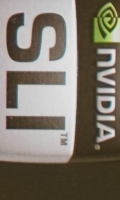
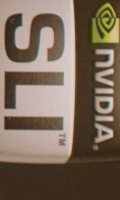
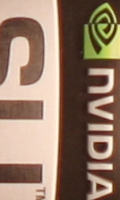

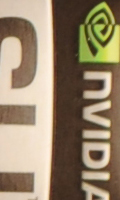
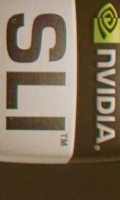
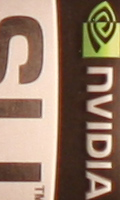
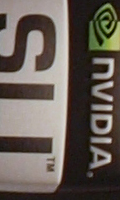
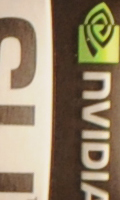
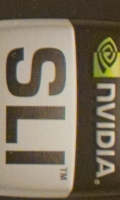
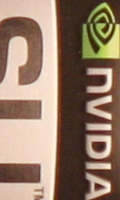

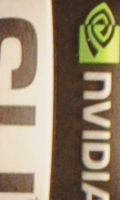

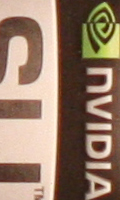

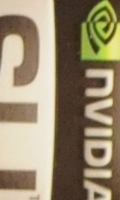
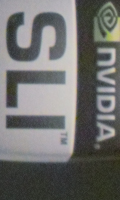
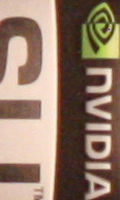
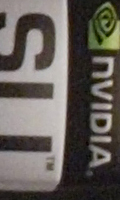


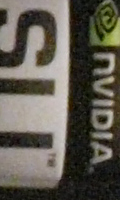

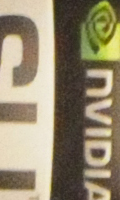








40 Comments
View All Comments
cheetah2k - Wednesday, June 4, 2008 - link
I've bought over 100 memory cards on ebay, and all at respectable prices (here in Australia we still pay about US$30 for 2GB!) and I've never had a problem. I just purchased a nice 8Gb Sandisk Ultra III CF for my Sony A350, 4Gb CF Ducati, and 8gb Sandisk MicroSD just recently, and again without any errors or faults.The only way to test these cards also, is to fill em up to the hilt with data. At 14MP, and 1 day of continuous shooting, I easily fill 8Gb.
The advice here should be dont buy $0.99 memory cards from sellers with less than 20 sales and 99% good comments or you will end up with BS backdoor memory cards full of sawdust instead of the usual silicone
cheetah2k - Tuesday, June 3, 2008 - link
In terms of this review, I think Anandtech has lost the plot againWhy compare a 14MP camera with 10 and 12MP??
You've reviewed the Sony A350, why isnt that in your review?
You're just wasting your own time carrying out reviews like this with out proper comparisons. I guess thats just because Anandtech is trying to be a jack of all trades, but not doing it very well
Wesley Fink - Tuesday, June 3, 2008 - link
Others would argue we should only compare the SD14 to 6 Megapixel cameras, or even less, since it is really a 4.7MP finished image. Most consider the SD14 roughly competitive in the 10 Megapixel space - with some tilting toward the 8 megapixel side and others to the 12 Megapixel end. Our choices were representative of prosumer cameras many would consider as having good IQ in that megapixel range, which was our goal.If you wish to compare the images to the Pentax K20D and the Sony A350 the crops and full images can be found at http://www.anandtech.com/digitalcameras/showdoc.as...">http://www.anandtech.com/digitalcameras/showdoc.as...
cheetah2k - Wednesday, June 4, 2008 - link
I understand what others argue. However, when you're comparing cameras, you also need to compare cameras of equal MP, regardless of what their end result is. This then gives an unexperienced DSLR user the opportunity to compare and examine the results from, for example, how a sony 14MP camera produces vs SD14 14MP camera, etc. This way, for those wanting 14MP, they can establish good value for money and make a call on where they ultimately want to end up. Therefore, it would have been good to include the Sony A350 results that you got from a previous review.As noted above, in the case of Anandtech's past review of the Canon 450D (12.2MP) vs Sony A350 (14.2MP) vs Nikon 10.1MP cameras, I understand the varying MP review as that was all that was around at the time. From that review I actually purchased a Sony A350X set with the 2 lenses, as I established it was good value for money (and actually cheaper than the Canon 450D)
Some times a LIKE for LIKE comparrison is what we all need, especially for those of us who are non-pro photographers.
melgross - Wednesday, June 4, 2008 - link
I've never heard of this being compared to a 12 MP camera. 8 to 9 seems to be the agreed upon equivalent. And even there, it depends upon the images, some look sharper, and some less so.pinto4402 - Tuesday, June 3, 2008 - link
Amen to the comment about the CF issue. I feel better about the startup time, but now I'm troubled by the memory card problems. When you depend on your gear for your living, any possible point of failure is scary.pinto4402 - Tuesday, June 3, 2008 - link
Holy cow. I considered purchasing a Sigma for portrait work because other portrait photographers rave about the IQ of the foveon sensor. I'm shocked, however, by the 9 second start-up time. This is not something anyone has discussed before. It is simply unacceptable for any modern camera to have such primitive electronics. I know that there are many "artistes" out there who feel smug about how they can create beautiful images with primitive gear. I am not one of them. I want my camera to function well and stay out of my way.This is a good, fair summary of the camera. While "ease of use" is a subjective and nebulous concept, I think it's appropriate that you pointed out that the camera took 9 seconds to boot up and has a slow write time. Aside from IQ comparisons, this is the kind of useful information I'm looking for in a camera review.
Maxington - Wednesday, June 4, 2008 - link
If I was heavily into portraits I'd go with the Fuji DSLR's, with their specialized sensors, not the Sigma.I can't knock Sigma lenses, they have some gems, but their cameras so far are pretty lacklustre.
I'd like Foveon to stay around as competition though, maybe with development it will find its strong points.
pinto4402 - Wednesday, June 4, 2008 - link
My only experience with Sigma lenses turned me off to "generic lenses" forever. I had my camera with a Sigma 17mm lense slung on my shoulders. As I was leaning down to pick something, the camera swung down and hit the ground. Not too hard, but hard enough. The lense and camera continued to operate fine, so I thought nothing of it. When I got home and developed my slides, I noticed that there were stray light streaks in all my images (not typical lense flare). When I examined the lense more carefully, I noticed that its plastic casing had cracked. The rubber focusing ring had obscured the crack.I'm still ticked off about this to this day 15 years later because I was on a once-in-a-lifetime trip to Cambodia photographing Angkor Wat. All the hundreds of images I took with the Sigma had light streaks. Luckily, it was not a paying job, but the images had a lot of personal importance to me.
I've never had any such problems with the Canon L lenses, even though they've taken worse abuse. Their all metal build quality and wheather sealing (as well as fantastic optical quality) are the main reasons why I have been loyal to Canon even though Nikon, for now, has arguably superior cameras (D300, D3) to what I'm using (40D, 5D).
pinto4402 - Wednesday, June 4, 2008 - link
I agree that Fuji has found a place in the toolkits of many portrait photographers. The deal killer for me is that it has low resolution. I generally enlarge my prints to 24x36. An effective resolution of 6MP on the S5 Pro does not cut it. Come to think of it, the Sigma is probably not a good choice either because of its lower resolution. I've been a happy Canon 5D user, but I'm always looking for something different to add to my kitbag. That's why the foveon had some appeal.